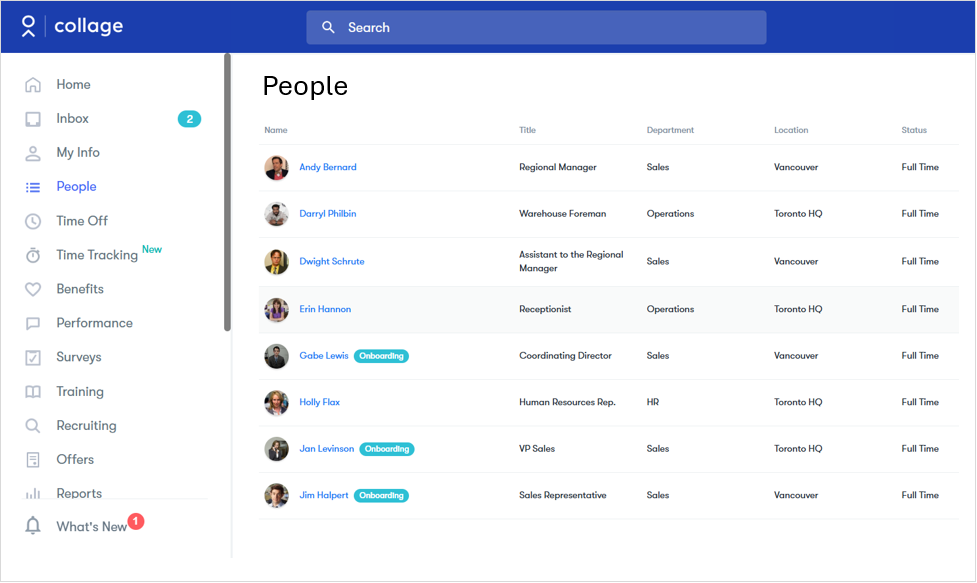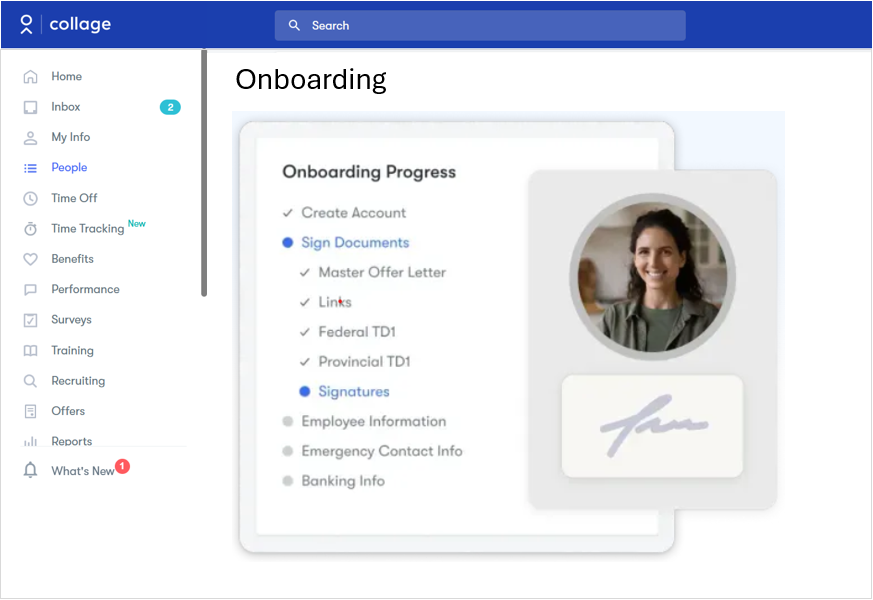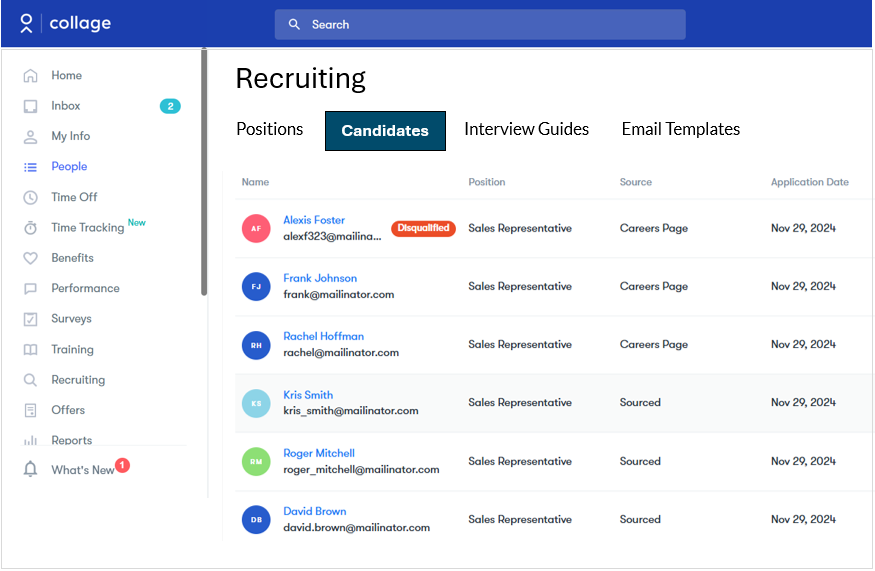Cost-Per-Hire - $3,500
Manual tasks like posting job ads, screening resumes, and scheduling interviews drive up labor costs, increasing cost-per-hire due to excessive administrative effort. Without a centralized applicant tracking system, recruiters and hiring managers often duplicate work, leading to inefficiencies, wasted time, and higher overall recruitment expenses.
|
| With an HRMS |
Estimated Annual Savings |
- Automates job postings, resume screening, and interview scheduling.
- Centralized applicant tracking reduces redundancy.
|
- Reduction in cost per hire: $500 (from $4,000 to $3,500).
- For 7 hires/year: $500 × 7 = $3,500 saved annually.
|
Inability to Scale - 20 hires - $260,000
As hiring volume grows, manual hiring processes slow down recruitment, increasing both time-to-fill and cost-per-hire, leading to delays in productivity and rising recruitment expenses. As businesses expand, these inefficiencies become even more costly. An HRMS streamlines workflows, reducing bottlenecks, cutting down time-to-fill, and lowering cost-per-hire, ensuring hiring scales efficiently without overwhelming HR teams.
|
| With an HRMS |
Estimated Annual Savings |
- Bulk Job Posting & Resume Screening – Automates job postings across multiple platforms and pre-screens resumes, ensuring a fast, scalable candidate pipeline.
- Automated Interview Scheduling – Coordinates interviews based on availability, reducing scheduling delays when hiring at scale.
- Centralized Applicant Tracking – Consolidates all candidate data, preventing duplicate efforts and keeping hiring teams aligned.
- High-Volume Candidate Management – Handles large applicant pools efficiently with tagging, filtering, and automated communication tools.
- Real-Time Hiring Analytics – Tracks time-to-fill, cost-per-hire, and pipeline efficiency to support data-driven scaling decisions.
- Seamless Integration with Onboarding – Transfers new hire data instantly, reducing manual data entry and allowing rapid workforce expansion.
|
1. Time-to-Fill Reduction
A lengthy hiring process leads to lost productivity and extended vacancies. An HRMS reduces time-to-fill by 30%, from 40 days to 28 days, allowing new hires to contribute sooner.
- Lost productivity cost per open role per day: $1,000
- Time saved per hire: 12 days
- Total savings for 20 hires per year: 12 days × $1,000/day × 20 = $240,000 saved annually
2. Cost-Per-Hire Reduction
Recruiting manually leads to higher hiring costs, from job postings to recruiter time. An HRMS can lowers cost-per-hire by 25%, for example from $4,000 to $3,000.
- $1,000Cost savings per hire:
- Total savings for 20 hires per year: $1,000 × 20 = $20,000 saved annually
|
Missed Top Sales Hires - $80,000
Hiring a top performer in a revenue-generating role can be the difference between meeting sales targets and falling short. Manual recruiting processes often lead to delays, poor communication, and missed opportunities to secure the best talent. When a top sales candidate withdraws or accepts another offer due to slow or inefficient hiring, businesses are forced to settle for a second-choice hire—resulting in lower sales performance and significant lost revenue. An HRMS streamlines recruiting, ensuring faster engagement with top talent and increasing offer acceptance rates.
|
| With an HRMS |
Estimated Annual Savings |
- Faster, structured hiring prevents top sales candidates from withdrawing.
- Advanced analytics help identify, prioritize and engage high-quality candidates.
- Streamlined communication improves the candidate experience, increasing offer acceptance rates.
|
- Top performer annual revenue contribution: $200,000.
- Second-choice hire performance (80% of top performer): $160,000 annual revenue.
- Revenue loss due to hiring a lower-performing candidate: $40,000 annually.
- Assuming 2 hires per year in sales roles: $80,000 revenue lost annually.
|
Lost Productivity for Vacant roles - $22,344
When positions remain vacant, existing employees take on extra work, leading to burnout, inefficiencies, and lost productivity. Additionally, managers and team members spend excessive time on an inefficient hiring process instead of their core responsibilities. An HRMS reduces these costs by filling roles faster and streamlining recruitment workflows. A recruiting HRMS streamlines hiring, reducing time-to-fill and easing the burden on teams.
|
| With an HRMS |
Estimated Annual Savings |
- Automated Interview Scheduling. – Eliminates back-and-forth coordination by syncing candidate and interviewer availability, reducing delays.
- Real-Time Hiring Pipeline Visibility – Keeps all stakeholders updated, reducing unnecessary check-ins and speeding up decision-making.
- Instant Offer Letter Generation & E-Signatures – Accelerates the final hiring stage by eliminating paperwork and approval bottlenecks.
- Pre-Built Interview Guides & Scorecards – Standardizes the interview process, reducing time spent creating questions and manually evaluating candidates.
- One-Click Candidate Feedback Collection – Automates post-interview feedback requests, ensuring timely input from hiring teams without disrupting their work.
- Mobile-Friendly Hiring Access – Enables hiring managers to review resumes, schedule interviews, and approve offers on the go, minimizing disruptions to their primary responsibilities.
|
1. Productivity Loss from Vacant Positions
- Average salary per employee: $75,000 (including 20% overhead) =$38 per hour
- Vacant role productivity loss per day: 7.5 hours × $38 = $285 per day
- Time-to-fill reduction with an HRMS (25% faster): 10 days saved per hire (from 40 days to 30 days)
- Annual savings for 7 hires per year: 7 × 10 days × $285 = $19,950 saved annually
2. Time Spent by Non-HR Employees on Inefficient Hiring Tasks
- Average number of non-HR employees involved in hiring per open role: 3 (e.g., hiring manager + 2 team members)
- Average time spent per person per hire: 6 hours
- Total team time spent per hire: 3 × 6 hours = 18 hours
- Cost per hire due to lost productivity: 18 hours × $38 = $684
- Annual cost for 7 hires: 7 × $684 = $4,788 lost annually
- Estimated 50% reduction in time spent with an HRMS: $2,394 saved annually
|
Negative Employer Branding - $4,000
Manual recruiting creates a poor and unprofessional candidate experience, leading to slow responses, disorganized or absent communication, and unclear hiring timelines—all of which damage employer branding. Candidates left waiting or ignored are much more likely to drop-off and share negative feedback - even publically, making it harder (and more expensive) to attract top talent. An HRMS improves employer branding by ensuring fast, transparent, and professional hiring.
|
| HRMS Process |
Estimated Annual Savings |
- Automated Candidate Status Updates – Keeps applicants informed at every stage, preventing frustration from being left in the dark.
- Faster Response Times with AI-Driven Screening – Reduces long wait times by quickly identifying and progressing top candidates.
- Self-Service Candidate Portals – Allows applicants to check their application status in real time, reducing uncertainty and improving their experience.
- Streamlined Interview Scheduling – Eliminates back-and-forth emails, ensuring interviews are scheduled quickly and efficiently.
- Structured Hiring Workflows – Prevents delays by ensuring hiring teams follow a consistent, timely process from application to offer.
- Automated Post-Interview Feedback Requests – Ensures candidates receive timely updates instead of being ghosted after interviews.
- Branded Career Portals & Communication Templates – Creates a professional, polished candidate experience that reinforces a strong employer brand.
|
- Average cost-per-hire: $4,000
- Candidate drop-off rate before HRMS: 20% (candidates withdrawing before an offer due to slow responses or poor communication)
- Candidate drop-off rate after HRMS: 10% (reduced by automating updates and improving hiring speed)
- Annual hires: 7
- Reduction in drop-off saves 1 additional hire per year
- Total savings from retaining candidates: $4,000 saved annually
|



